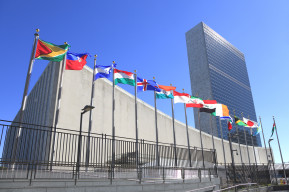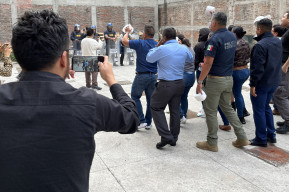News
UNESCO, IWMF and Knight Center for Journalism launch self-directed courses to improve safety of women journalists

In order to provide women journalists, newsrooms and their allies with resources to ensure that women media workers can exercise their profession safely, on International Women’s Day, UNESCO, the Knight Center for Journalism in the Americas and the International Women’s Media Foundation (IWMF) hosted a multilingual webinar to launch the French and Spanish versions of the self-directed course entitled How to report safely/Exercer le journalisme en toute sécurité/Como informar de manera segura. The course, initially launched in 2021 as a MOOC in English, provides training to tackle threats and harassment that women media workers face in their daily lives.
Guilherme Canela, UNESCO Chief of Section for Freedom of Expression and Safety of Journalists announced that additional language versions of the course are envisioned, starting with an Arabic course in 2022.
Alison Baskerville, journalism safety trainer, explained that, in the past, safety trainings often failed to factor identity into determining and managing risks. She highlighted how women, LGBTI or non-binary journalists may be exposed to additional threats and that this needs to be covered by safety trainings as well. She advocated that identity-based considerations should be incorporated, starting from risk assessments when preparing for journalistic assignments.
A second theme that was identified by panelists and is covered in the self-directed courses is the need to recognize the impact of the journalistic profession on the mental health of journalists more broadly but also with regards to gender-specific threats faced by women journalists, incorporating this in any safety trainings and protocols used by newsrooms or journalism institutions. Patricia Mayorga Ordoñez, investigative journalist in Mexico, underscored the impact that reporting in a high-risk environment had on her and highlighted the importance of self-awareness as a coping strategy.
Networks of solidarity – both amongst women journalists themselves but also with male colleagues, as well as within newsrooms and media organizations more broadly, were identified as another key element to improving the safety of women journalists. Tatiana Mossot, journalist and founder of the MaMa project, which provides support to women journalists in French-speaking African countries, highlighted the need to break the taboo of speaking about the physical, psychological, and digital threats that women journalists face and called on newsrooms to recognize and tackle these issues. These messages were echoed by the French and Spanish course instructors, Elodie Vialle and Sandra Chaher, while Yemile Bucay, Risk and Security Manager at Buzzfeed underscored the responsibility of newsrooms to approach safety holistically and to provide resources and trainings across the newsrooms, targeting these at journalists of all genders.







